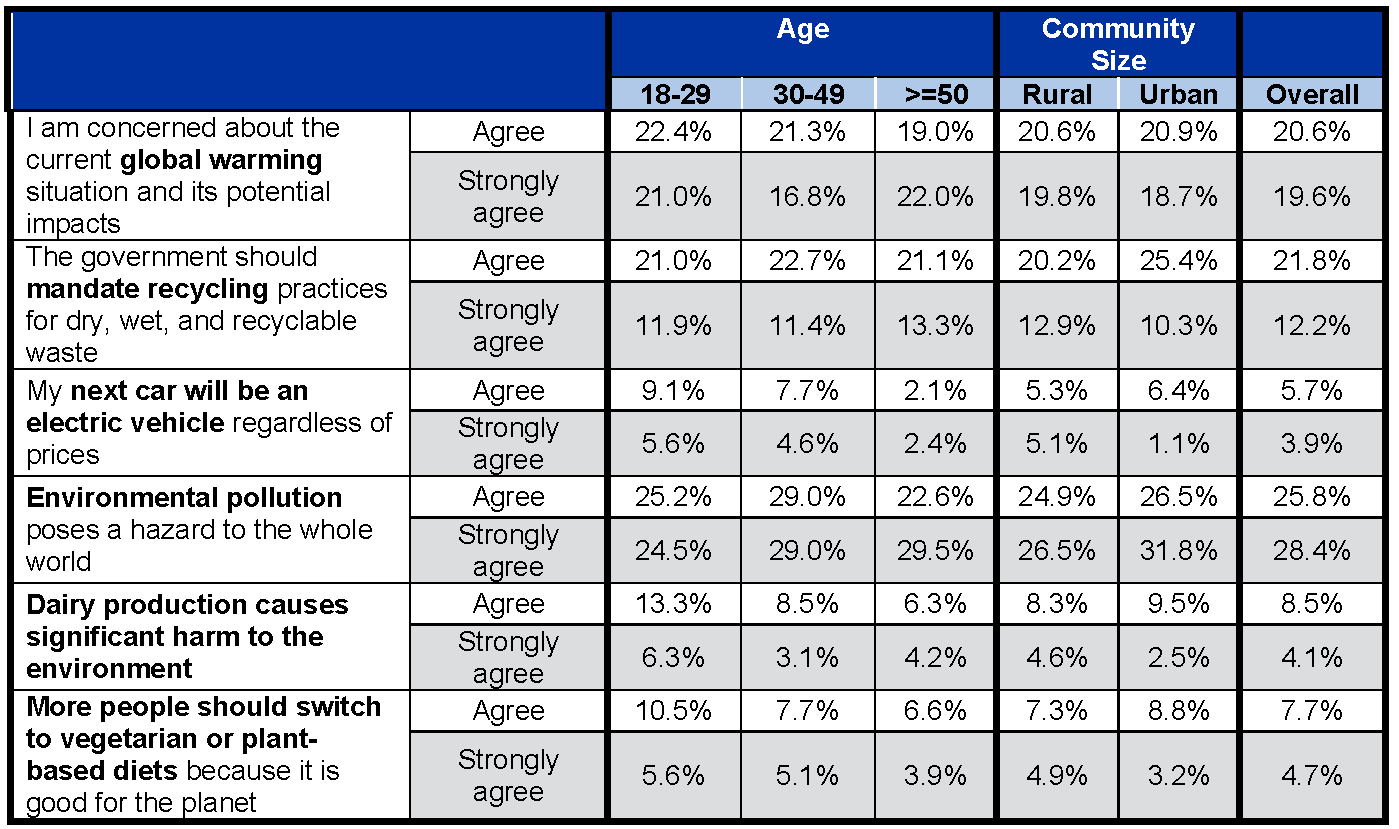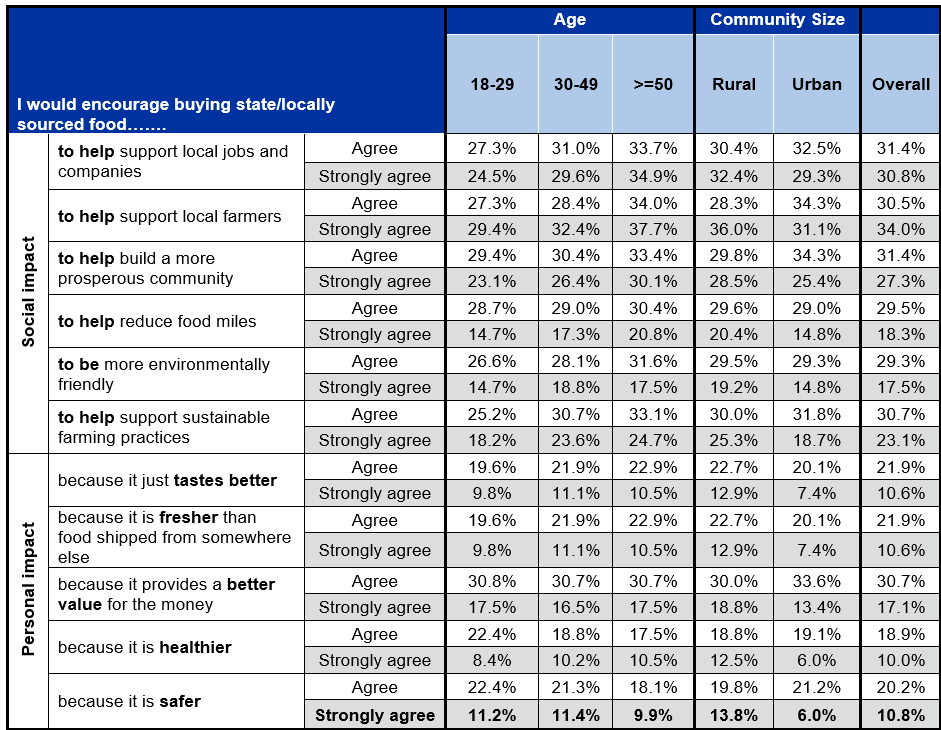Kentucky Dairy Product Shoppers: Perceptions of Local Sourcing and the Environment
Kentucky Dairy Product Shoppers: Perceptions of Local Sourcing and the Environment

A significant survey was completed during the early part of 2023, exploring the values and demand perceptions of Kentucky consumers of dairy products. This survey of 827 individuals explored a wide range of attitudes and behaviors connected with a range of food sourcing and impact considerations. Animal agriculture has received considerable attention in the current climate debate, with livestock product systems especially being identified as having a particularly significant role. An FAO report identified all livestock as contributing 14.5% of human-induced greenhouse gas emissions – of which beef (41%) and dairy (20%) contribute significantly to that livestock impact.[1] Kentucky consumer values around dairy and the environment were explored as part of this survey.
Local sourcing of food products generally is important to most Kentuckians, with a special value placed on the perceived social impacts this might have (Table 1). Environmental and sustainability impacts on society are part of this mix. Personal benefits seem less important drivers. Rural Kentuckians have stronger agreement across both social and personal reasons for encouraging local sourcing. Younger Kentuckians are generally less inclined to encourage local sourcing, especially as a means for social benefit.
Environmental behaviors more generally – beyond strictly food choices – reflect concern from most Kentuckians about pollution and the environment and global warming, but the lower connection of these issues with the consumption of animal products or dairy production. The slightly higher concern reflected around these questions from younger Kentucky shoppers, however, reflects a global trend of some concern to the animal agriculture industry. (Table 2).
Understanding where consumer preferences lie can better help producers market their products to their target customers. If the target market cares about environmental pollution related to dairy production, showing customers the different ways, the farm operation manages with a view to being more environmentally sustainable can provide a competitive advantage. Highlighting these characteristics either on products or websites can draw potential customers to purchase their dairy products from these suppliers. Carbon footprint and greenhouse gas emission branding have become hot buttons in the food industry generally.[2]
Local markets for smaller dairy farms are another possible segment to explore and have been the subject of a regional Dairy Business Innovation Initiative funded by the USDA. Additional summaries and studies drawing on this data looking at different products and consumer issues are being posted to the MarketReady website. The MarketReady website has additional information and sources going over buyers in Kentucky and what they look for when stocking dairy products to different grant opportunities and workshops.
Overall, looking at the demand for local dairy products allows consumers to make informed and sustainable choices that benefit both individuals and communities, supporting the local economies, promoting environmental stewardship, and contributing to a more resilient and connected food system. It is important to note that the significance of the demand for local dairy products may vary among different consumer segments. Some consumers prioritize local dairy products more than others, depending on their values, preferences, and the specific context of the product being offered. Understanding these values and characteristics can help producers along the way with their marketing strategies.
Table 1: Local Sourcing Values with Social and Personal Impacts
Table 2. Environmental Perceptions and Behaviors

[1] Gerber, P.J., Steinfeld, H., Henderson, B., Mottet, A., Opio, C., Dijkman, J., Falcucci, A. & Tempio, G. 2013. Tackling climate change through livestock – A global assessment of emissions and mitigation opportunities. Food and Agriculture Organization of the United Nations (FAO), Rome. Note: Poore and Nemecek, in a 2018 Science publication, place these rates higher with 26% of greenhouse gas emissions coming from food, of which 58% of that is attributable to animal products – especially beef and lamb. Actual impacts vary substantially depending on the production systems and value chain.
[2] Tyson’s Brazen Beef program is a high profile example that has received USDA certification.
Recommended Citation Format:
Woods, T., S. Zhao, A. Varziri, and C. Dant. "Kentucky Dairy Product Shoppers: Perceptions of Local Sourcing and the Environment." Economic and Policy Update (23):6, Department of Agricultural Economics, University of Kentucky, June 29, 2023.
Author(s) Contact Information:

